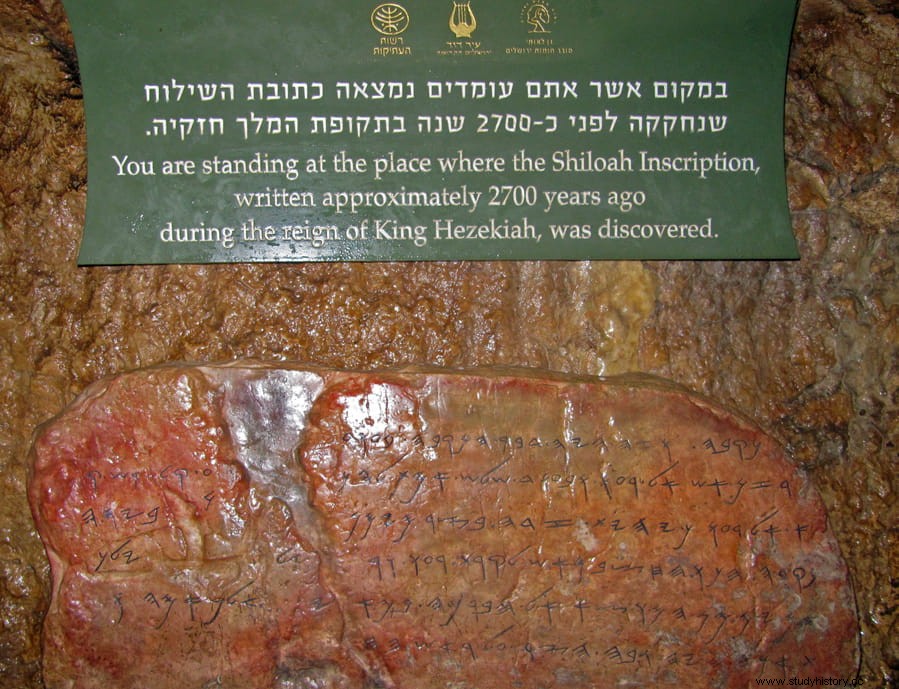Also called Siloam tunnel due to the inscription discovered in it, which tells the story of its opening, the Hezekiah Tunnel is an underground water conduction under the city of David in Jerusalem. Mentioned in the Bible (Kings 2, 20:20) as the work of King Hezekiah within the preparations for the defense of the city from the Assyrian siege, it is considered to be one of the oldest and longest tunnels in the world that can be visited .

The analyzes of organic matter found in the original plaster of its walls confirmed the dating provided by the biblical texts that mention its construction. However, new excavations carried out in 2011 suggest that it could be much older, from the late 9th or early 8th century BC
What does seem clear is that the structure was part of the plan to protect the city from the Assyrians, who during the second half of the 8th century B.C. They advanced from Syria and the West Bank towards the New Kingdom of Egypt, and thus provide the city with drinking water during the siege that took place in 701 BC.

The tunnel starts from the Gihón Fountain , the only one with water throughout the year, an underground spring that flows from a grotto on the eastern slope of Mount Sion protected by a defensive tower already included in the city walls.
It follows the Jebusite Spring (identified as the channel through which the Israelites conquered the city in the time of King David), and heads south-southwest through Mount Zion until it empties into the Siloam Pool , already inside the city walls. The current pool is Byzantine, although archaeological excavations found an older one inside.
The construction of the tunnel began on both sides, a group of workers began to drill from the Gihón Fountain and the other from the pool. How the Israelis managed to lead the two teams for them to converge remains unknown to the researchers.
Some have suggested that other groups were hitting the surface to guide the excavators. rocky with big hammers or hammers in order to direct them in the right direction. However, in the structure of the tunnel, the multiple directional errors made are evident.

In 1884, a tombstone embedded in the wall, called inscription of Siloé, was found near the entrance by the pool side. , which is now in the Istanbul Archaeological Museum. It details the work of the last phase of construction, when both groups of workers were barely 30 meters apart, which makes it an archaeological gem. Unfortunately a part of the inscription is now illegible, and it is believed that it could provide more information about the system used by the Israelites. The readable part says:

But the tunnel was already described for the first time by Franciscus Quaresmius in 1625, and explored in 1838 by the biblical researcher Edward Robinson and by Charles Warren in 1865. It was the latter who suggested that it may have been built by King Hezekiah, which would come later. to confirm the discovery of the inscription 19 years later.
The tunnel is 533 meters long and the difference in height between its two ends is just 30 centimeters, enough to divert the water into the defensive enclosure. Both the area of the Gihón Fountain and the entire tunnel to the Siloé pool can be visited and traversed by tourists and archeology enthusiasts, lamp in hand and knee-deep in water throughout the entire journey. 
In 1899 another underground channel was discovered that also connected the Gihón Fountain with the surroundings of the Siloé Pool. Archaeologists determined that this one was much older, built around 1800 B.C. in the Bronze Age, thus constituting proof that the water from the spring was already used many centuries before the reign of King Hezekiah.
